From Monday to Thursday you can train for two and a half hours each morning and afternoon. Each day you can work on 2 separate disciplines (one from category A and one from category B) for 2.5 hours each, totalling 5 hours per day. This allows for 10 hours of intensive training in each of your chosen disciplines over 4 days. Please select one from each category.
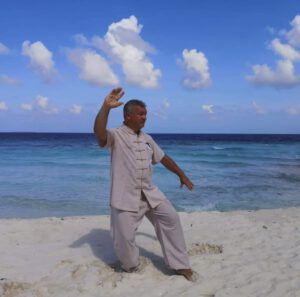 A1 – Mauro Bertoli
A1 – Mauro Bertoli
Relations Between Postures, Form and Pushing Hands
We will work with connecting some of the most common postures present in Yang style Taijiquan and the practice of pushing hands.
We will work with one posture each day, without focusing on the differences in interpretations between schools, looking for continuity between the “Inner work”, the forms and pushing hands.
The workshops will be accessible to all levels and especially suitable for beginners.
Accessible to all
A2 – Lucia Ring-Watkins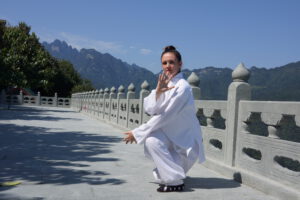
Stillness and Movement in Wudang Pai Tai Chi
In this course we will train basic principles of movement and stillness in Wudang Pai Tai Chi and how they support one another. We’ll be looking at Daoist meditation and standing stake, as well as standing and walking exercises for drawing open the 5 bows of the body, improving co-ordination, drawing on the power of spirals and movement from Dantian. Examples will be drawn from Wudang Pai Tai Chi, and students will be encouraged to find and apply the principles within their own Tai Chi styles.
Accessible to all
A3 – Gordon Faulkner
Wudang Taiyi Xiaoyao Zhang
Taiyi, also known as Liangyi, is one of the lesser known internal martial systems of Wudang boxing.
The belief is that Taiyi is the complement to Taiji, as it is said, “Taiji is formed by combining Yin and Yang while Taiyi is formed by separating Yin and Yang.”
The name Taiyi also symbolises the transitional state that lies between Wuji (no extremes) and Taiji (great extremes).
The Xiaoyao part of the name comes from the title of the first chapter of the ancient philosophy text, Zhuangzi ‘Free and Easy Wandering.’
Taiyi Xiaoyao Zhang – the Free Unfettered Palm of Taiyi.
Wudang Xiaoyao Zhang contains the proto elements of Taijiquan, Baguazhang and Xingyiquan. It has the softness of Taijiquan while some steps and explosive power are like Xingyiquan and other steps and turns with sinuous actions are like Baguazhang.
The form combines movements that are slow and gentle, alternating with fast explosive power. At one end of the spectrum, it can be performed martially. At the other end, paying attention to the cultivation of internal energy, it becomes Qigong.
Accessible to all although some previous experience would be beneficial
A4 – John Bolwell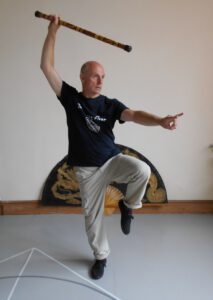
An Introduction to the Staff
Working with a short staff, we will build a repertoire of skills and drills that will develop posture and poise as well as enhance both the flow and the focus within our movement.
Over the 4 days, this will be developed into (i) a short solo sequence and (ii) a partner routine.
The staff is sometimes referred to as the root of all weapons, a symbol of the traveller and pilgrim, heralds and messengers; a conduit between heaven & earth and yet readily available to even the humblest person.
The ideal length for this particular work is between 4′ and 5′.
If you have a staff, please bring it along; however, it will also be possible to borrow one for the week.
Accessible to all
B1 – Chiara Vendettuoli 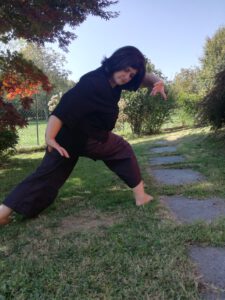
Sensing hands and Biospirali as an approach to partner work
Focusing on the connection point in sensing, not pushing, hands and the energies of the Biospirali to perhaps give you a new attitude to partner work.
Accessible to all.
B2 – James Carss
From Standing to Moving…..keeping the stucture and feeling
- Standing practice as a means to an end
An in depth exploration and practice of zhang zhuang as a method to build a foundation and platform for internal martial arts practice. During this session we examine and look into various postures and methods and their relationship to moving practice and building a core or engine. We will look at the meaning behind 6 directions of force and the use of ‘intent’ or imagery/visualisation to enhance training which of course is the essence of yiquan or mind boxing. We will also look at how visualisation interacts with mindfulness which can seem a contradiction in itself. The session will be practical and hands on with both solo and partner work. Although we will sample various methods and postures it will be suitable for all and all challenging practice can be modified to the participants own liking.
- Transition and stepping exercises of Yiquan
Moving from standing to stepping whilst maintaining all the elements of structural integrity and centre can be a major step! In this session we will transition from static standing to micro movements (si lik) to stepping and generating whole body power. We will work at very speeds from extremely slow to fast. The exercises we will be doing are unique and special to the Han system of Yiquan but will make a significant difference to your own practice no matter if its tai chi, chi gung or any other art.
- The Xingyiquan 5 elements
The five elements or fists of xingyiquan have origins in ancient battlefield practice with the spear. Both the founder of yiquan and the Han brothers had significant early backgrounds in this practice. Indeed the Han tradition of yiquan still includes this very important practice and the link and transition with zhang zhuang including shape, intent, feeling any structure is a method to really accelerate your practice in any internal art. In this session we will not be looking to create any flashy modern wushu version of this but rather very slow, smooth and connected movement to express the key aspects of each fist.
- The 12 techniques of Han Xing Yuen
Master Han Xing Yuen (or little Han) was an early student of the Yiquan founder Wang Xiang Zhai and well known across China for his prowess in the internal martial arts. At the onset of the cultural revolution, he fled to Hong Kong like many Masters and made his name there, he was also among the very first of people to teach international seminars in the 1970s he visited both the UK and States to teach notable Tai Chi teachers of that time including Chu King Hing, Sam Tam, Gregory Fong, Henry Look and several others. The 12 techniques of Master Han or sap yi tong sau in Cantonese were 12 simple but deep expressions of his martial arts lifetime study of internal arts and contain key elements of xingyiquan, Baguazhang liuhebafa, tai chi chuan and Chinese wrestling. All are performed with a similar stepping pattern and of course with the unmistakable flavour of yiquan.
Accessible to all
B3 – Paul Silfverstrale 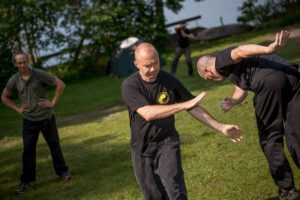
Practicalities
- San Shou in Tui Shou.
Traditional applications within, the 4 directions context.
- Qin Na
Seizing and holding in push hands.
- The gyrating Arms of Tai Chi Chuan
Concept and technique.
- Relax, not relaxed.
Alertness and awareness.
Internal and external.
B4 – Helmut Oberlack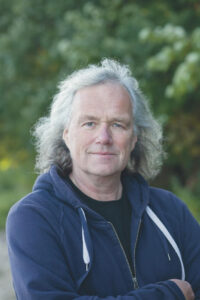
Shibashi Set 5
Like the other sets, the fifth set of shibashi (or taiji qigong) contains 18 movements, each of which is performed 6 to 8 times. Some are variations of movements from the first sets, others are adaptations of typical Taiji movements and some are very unusual for a Qigong form. They are relatively easy to learn, even if you don’t know the first sets.
In this workshop we will not only learn the movements, but also look at the basic principles of Qigong and the Shibashi system, such as sinking and rising, opening and closing, the connection of the body centre with arms and legs, the flow of movement and the harmonious interplay of movement, breathing and mind.
This workshop is open to everyone, experience with other types of Qigong or Taijiquan is of course always helpful.
Copyright 2024 Tai Chi Caledonia | Privacy Policy